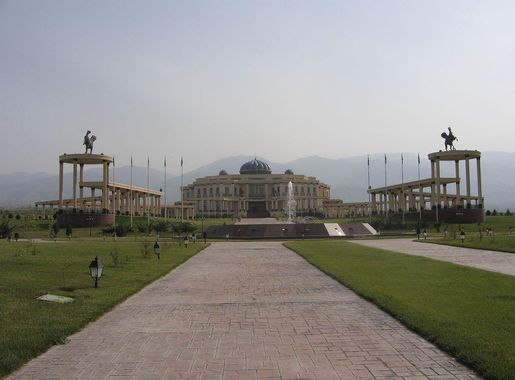
The Marble Marvel of Central Asia
Discover Ashgabat: A city of white marble wonders, rich history, and vibrant culture in the heart of Central Asia.
Ashgabat, the capital city of Turkmenistan, offers a unique blend of modernity and tradition. Known for its white marble buildings and grand monuments, Ashgabat stands as a testament to the country's architectural ambition. The city's skyline is dotted with gleaming structures that sparkle under the Central Asian sun, making it a fascinating visual experience for any visitor. Ashgabat is not just about its impressive architecture. The city is rich in history and culture, with numerous museums and cultural sites that give insight into Turkmenistan's past. The National Museum of History and Ethnography and the Turkmen Carpet Museum are must-visits for those interested in the region's heritage. The city also boasts several parks and gardens that offer a peaceful respite from the urban hustle. For those looking to experience local life, the Altyn Asyr Bazaar, also known as the Russian Bazaar, is a bustling market where you can find everything from fresh produce to traditional crafts. The city's cuisine is another highlight, with local dishes like plov and kebabs offering a taste of Turkmenistan's culinary traditions. Ashgabat is a city that promises a unique and enriching travel experience.
Local tips in Ashgabat
- Visit the city during spring or autumn for the most pleasant weather.
- Carry local currency, Manat, as credit cards are not widely accepted.
- Dress modestly to respect local customs, especially when visiting religious sites.
- Learn a few basic phrases in Turkmen or Russian to help with communication.
- Plan a visit to the Altyn Asyr Bazaar early in the morning to avoid the crowds and heat.
The Marble Marvel of Central Asia
Ashgabat, the capital city of Turkmenistan, offers a unique blend of modernity and tradition. Known for its white marble buildings and grand monuments, Ashgabat stands as a testament to the country's architectural ambition. The city's skyline is dotted with gleaming structures that sparkle under the Central Asian sun, making it a fascinating visual experience for any visitor. Ashgabat is not just about its impressive architecture. The city is rich in history and culture, with numerous museums and cultural sites that give insight into Turkmenistan's past. The National Museum of History and Ethnography and the Turkmen Carpet Museum are must-visits for those interested in the region's heritage. The city also boasts several parks and gardens that offer a peaceful respite from the urban hustle. For those looking to experience local life, the Altyn Asyr Bazaar, also known as the Russian Bazaar, is a bustling market where you can find everything from fresh produce to traditional crafts. The city's cuisine is another highlight, with local dishes like plov and kebabs offering a taste of Turkmenistan's culinary traditions. Ashgabat is a city that promises a unique and enriching travel experience.
When is the best time to go to Ashgabat?
Iconic landmarks you can’t miss
Ertugrul Gazi Mosque
Explore the captivating Ertugrul Gazi Mosque in Ashgabat, an architectural masterpiece blending spirituality and cultural heritage.
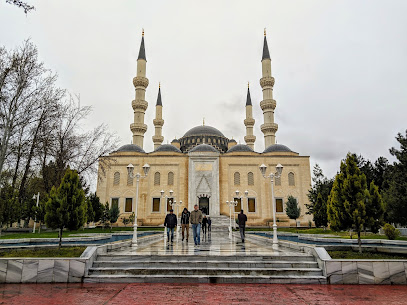
Independence Monument
Discover the stunning Independence Monument in Ashgabat, a symbol of Turkmenistan's heritage and freedom amidst beautiful gardens and rich history.
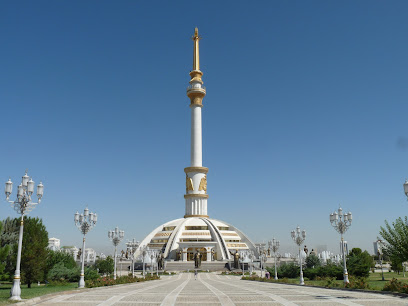
Independence Park
Discover the serene beauty and cultural richness of Independence Park in Ashgabat, a peaceful retreat filled with stunning monuments and lush landscapes.
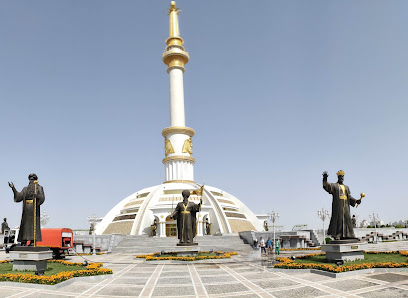
Altyn Asyr Bazar
Discover the vibrant culture and authentic flavors of Turkmenistan at Altyn Asyr Bazar in Ashgabat, the largest bazaar in the country.
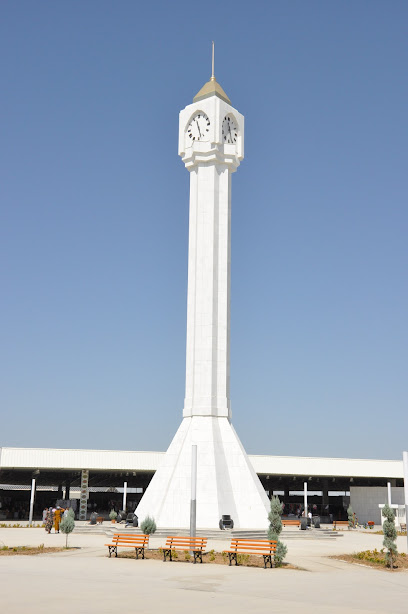
Turkmenbashy Ruhy Mosque
Discover the grandeur and spirituality of Turkmenbashy Ruhy Mosque, a stunning architectural gem in Ashgabat, Turkmenistan, inviting travelers from around the world.

Bagt Koshgi
Discover Bagt Koshgi, a stunning wedding venue in Ashgabat, where traditional Turkmen culture meets modern elegance amidst breathtaking architecture.
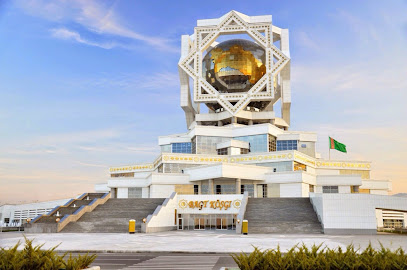
Old Nisa
Explore Old Nisa, a UNESCO World Heritage Site, and delve into the ancient history of the Parthians amidst stunning ruins and breathtaking landscapes.
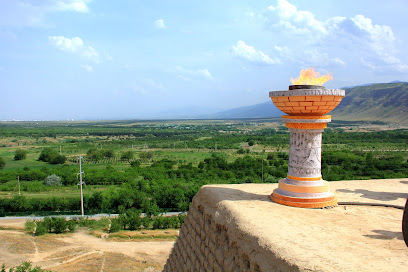
Oguzhan Palace
Explore the majestic Oguzhan Palace in Ashgabat, a stunning fusion of architecture and history, reflecting Turkmenistan's rich heritage and culture.
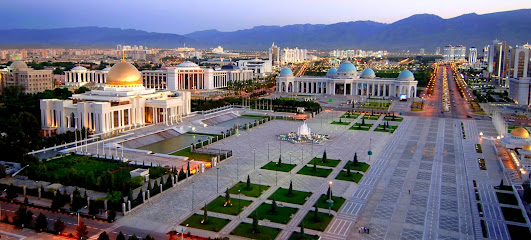
Turkmen Carpet Museum
Explore the Turkmen Carpet Museum in Ashgabat, where art, history, and culture intertwine through exquisite carpets that tell stories of a rich heritage.
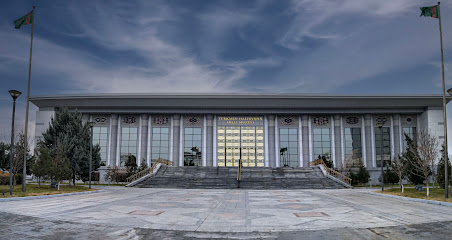
Museum of Fine Arts Türkmenistanyň Şekillendiriş sungaty muzeýi
Explore the Museum of Fine Arts in Ashgabat, a cultural treasure showcasing the artistry and heritage of Turkmenistan through captivating exhibits.
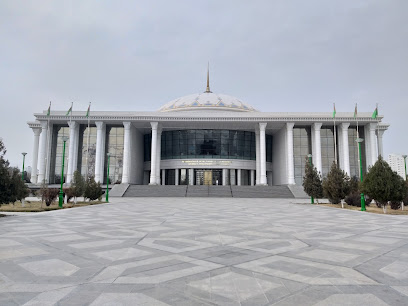
Monument of neutrality
Discover the Monument of Neutrality in Ashgabat, a stunning architectural marvel symbolizing peace and prosperity in Turkmenistan's capital.
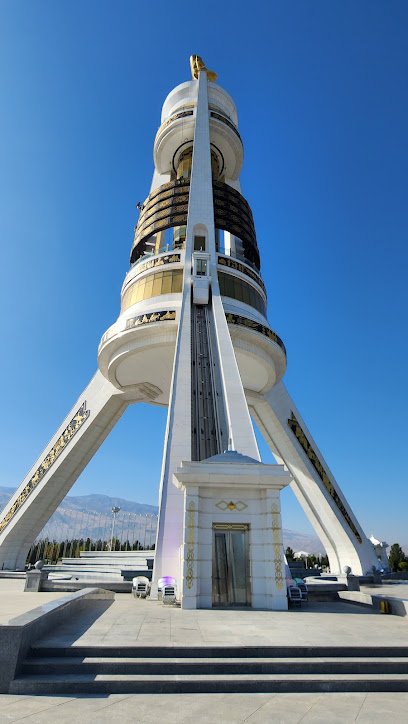
Seyit Jemaletdin Mosque
Discover the Seyit Jemaletdin Mosque in Annau, a breathtaking symbol of Turkmenistan's architectural heritage and spiritual serenity.
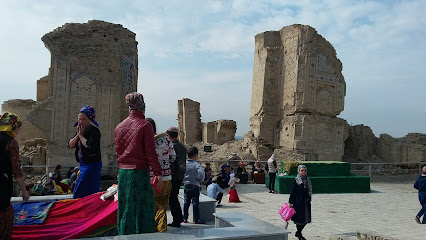
Ruhnama Monument
Explore the Ruhnama Monument in Ashgabat, a towering tribute to Turkmenistan's history, culture, and identity, surrounded by beautiful gardens.
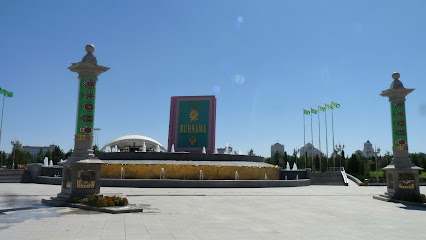
阿什哈巴德大旗桿
Experience the breathtaking beauty and rich cultural heritage of Ashgabat, the shining capital of Turkmenistan, where tradition meets modernity.
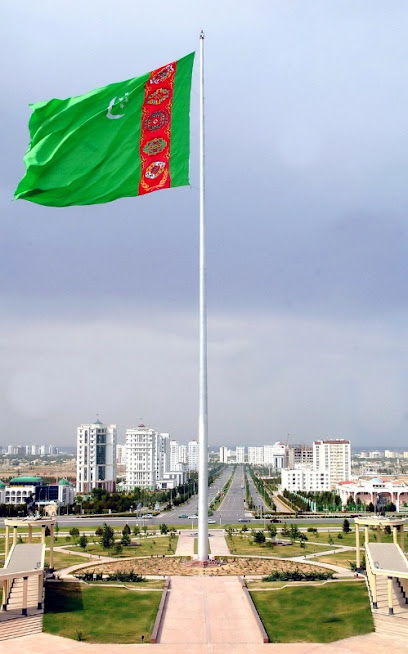
Unmissable attractions to see
Ertugrul Gazi Mosque
Explore the breathtaking Ertugrul Gazi Mosque in Ashgabat, a stunning architectural wonder and cultural hub of Turkmenistan.
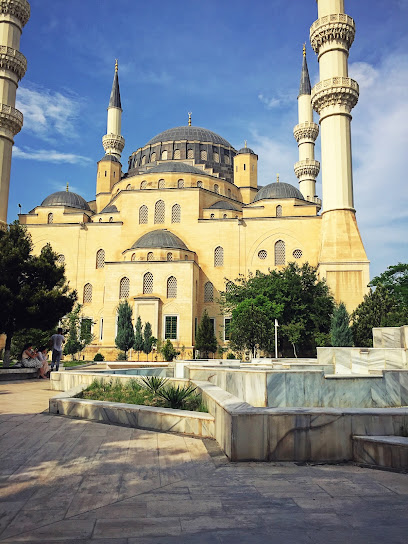
Independence Park
Explore the lush landscapes and cultural monuments of Independence Park, a serene oasis in the heart of Ashgabat, Turkmenistan.
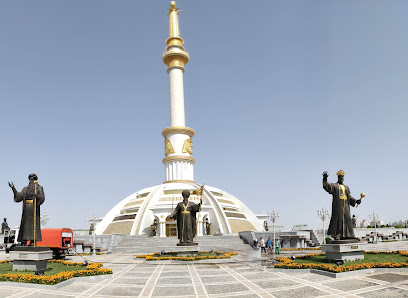
Altyn Asyr Bazar
Discover the vibrant Altyn Asyr Bazar, the largest indoor market in Ashgabat, where culture, cuisine, and craftsmanship come together.
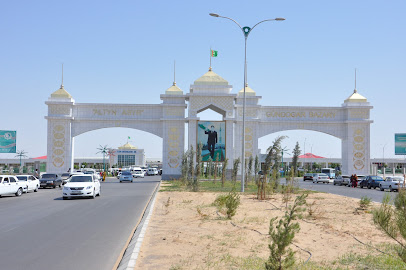
Alem Center
Experience the thrill of the world's largest indoor Ferris wheel and immerse yourself in the vibrant atmosphere at Alem Center in Ashgabat.
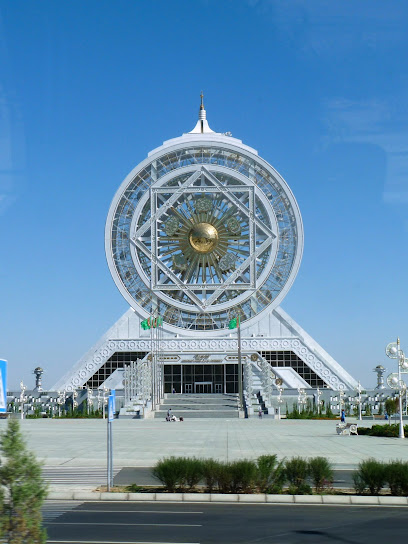
National Museum of Turkmenistan
Explore the National Museum of Turkmenistan, a treasure trove of history and culture showcasing the rich heritage of Turkmenistan through stunning artifacts and exhibitions.

Oguzhan Palace
Explore Oguzhan Palace in Ashgabat, a stunning architectural marvel and a symbol of Turkmenistan's rich cultural heritage and governance.
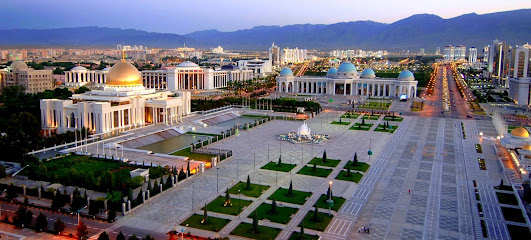
Turkmen Carpet Museum
Discover the artistry and history of Turkmen carpets at the Turkmen Carpet Museum in Ashgabat, a cultural gem showcasing exquisite craftsmanship.
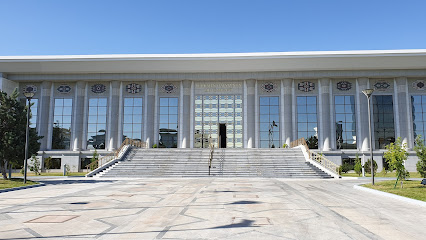
Museum of Fine Arts Türkmenistanyň Şekillendiriş sungaty muzeýi
Explore the Museum of Fine Arts in Ashgabat, a cultural gem showcasing Turkmen heritage and contemporary artistry.
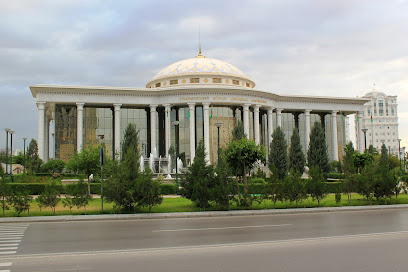
Monument of neutrality
Explore the stunning Monument of Neutrality in Ashgabat, a tribute to peace and independence in Turkmenistan, surrounded by beautiful gardens.
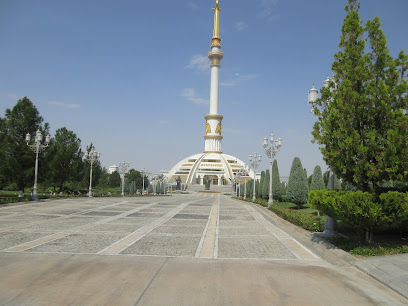
Constitution Monument
Explore the Constitution Monument in Ashgabat, a stunning symbol of Turkmenistan's heritage and commitment to its constitutional values.
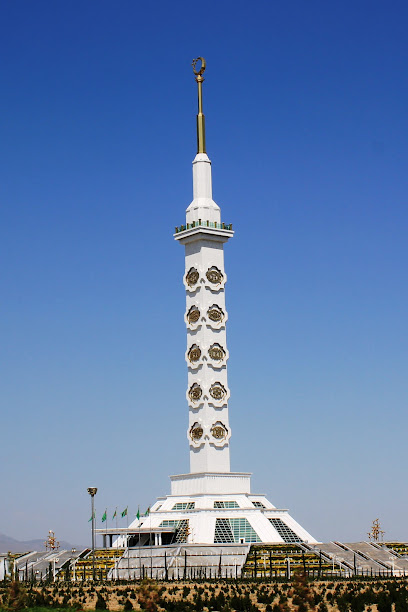
Ashgabat Fountain
Discover the enchanting Ashgabat Fountain, a stunning display of water, light, and music in the heart of Turkmenistan's capital.

Abadancylyk monumenti
Discover the Abadancylyk Monument in Ashgabat, a stunning tribute to Turkmenistan's cultural heritage and architectural brilliance.
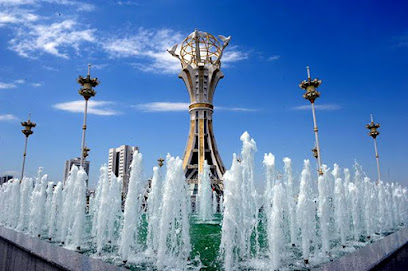
Essential places to dine
Hezzet Restaurant
Experience authentic Turkmen cuisine at Hezzet Restaurant - where tradition meets taste in Ashgabat.
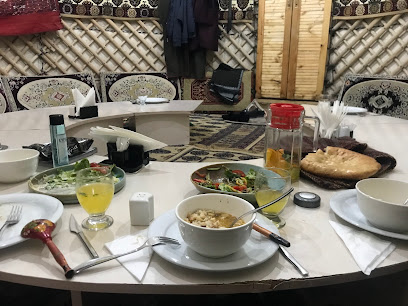
Altyn Açar
Experience the finest desserts in Ashgabat at Altyn Açar - where every bite is a celebration of sweetness.
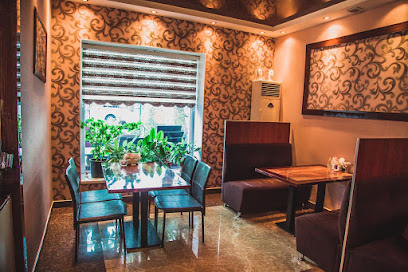
AlpEt Steakhouse
Discover the exquisite flavors of premium steaks at AlpEt Steakhouse in Ashgabat - where culinary excellence meets warm hospitality.
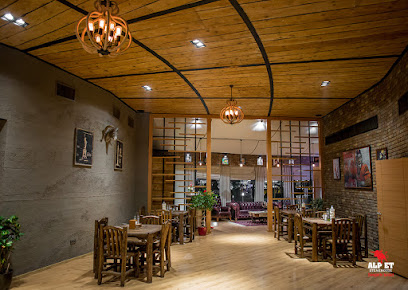
KOPETDAG PROJECT
Experience authentic Turkmen cuisine at Kopetdag Project in Ashgabat - where tradition meets contemporary flair in a vibrant setting.
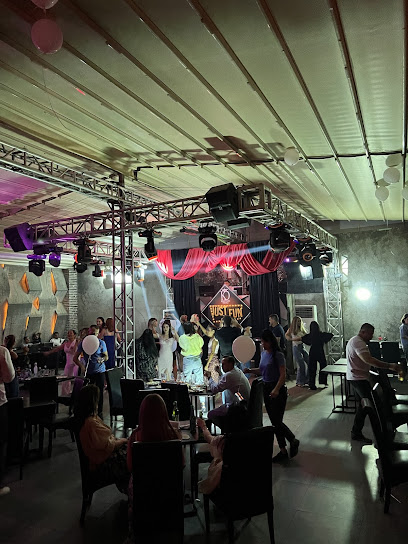
Berk Garden Pub
Experience the best of Turkmen cuisine and local brews at Berk Garden Pub - your go-to beer garden in Ashgabat.
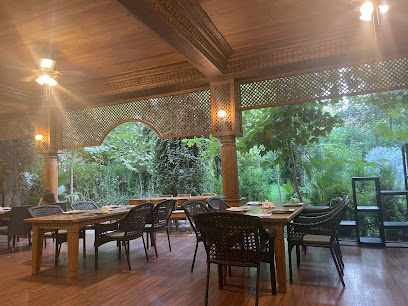
Chatma Restaurant & Lounge
Experience authentic Turkmen cuisine in a modern setting at Chatma Restaurant & Lounge in Ashgabat.

Altyn Ada
Experience authentic Turkmen cuisine at Altyn Ada in Ashgabat - where every dish tells a story.
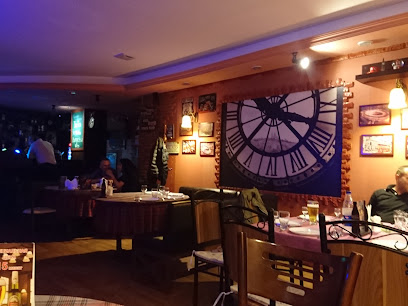
Mandarin Restaurant
Discover exquisite flavors and warm hospitality at Mandarin Restaurant in Ashgabat - a must-visit culinary destination.
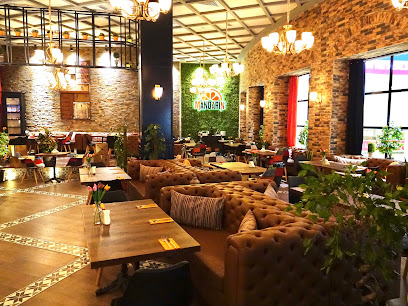
Erzurum Restaurant
Experience authentic Turkish cuisine at Erzurum Restaurant in Ashgabat – where every meal tells a story of tradition and flavor.
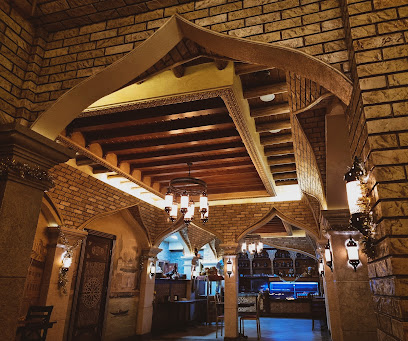
Joshgun Palow House
Experience authentic Turkmen cuisine at Joshgun Palow House in Ashgabat – where tradition meets flavor in every bite.
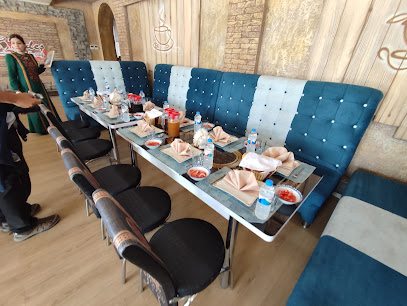
Zip 90 (Balyk Tagamlary)
Experience authentic Turkmen cuisine at Zip 90 in Ashgabat's Bagtyyarlyk district – where tradition meets taste.
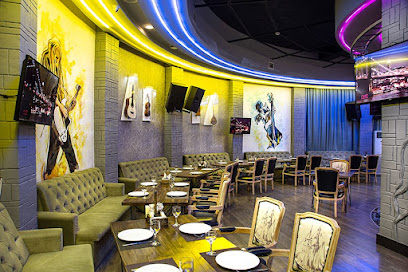
Euphoria
Experience the flavors of Turkmenistan at Euphoria Restaurant in Ashgabat—where culinary excellence meets warm hospitality.
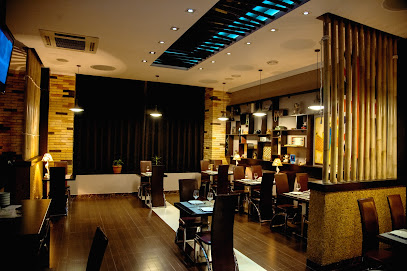
Yashlyk
Discover the authentic taste of Turkmenistan at Yashlyk Restaurant in Ashgabat – where tradition meets flavor.
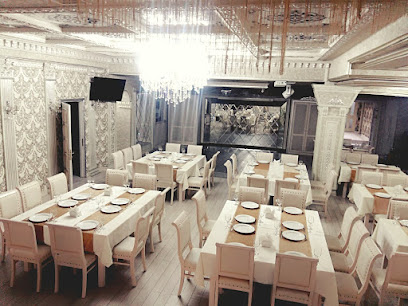
Sim-Sim
Experience authentic Turkmen cuisine at Sim-Sim in Ashgabat—where flavor meets tradition in an inviting setting.
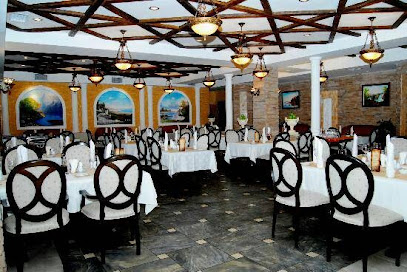
CentralPark
Discover Ashgabat's culinary delight at Central Park – where delicious dining meets lively karaoke entertainment.
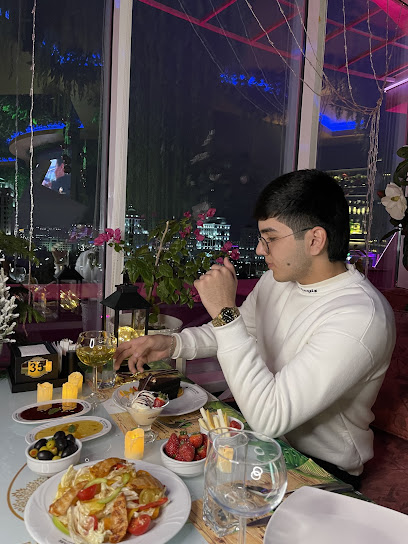
Markets, malls and hidden boutiques
Berkarar
Explore Berkarar, Ashgabat's premier shopping mall, featuring a diverse range of shops and delicious dining options in a vibrant atmosphere.

Wabrum.com - интернет магазин
Explore Wabrum.com in Ashgabat for the latest in men's, women's, and children's fashion, all under one stylish roof.

The OUTS
Discover the vibrant fashion scene at The OUTS in Ashgabat, where modern design meets traditional Turkmen style.
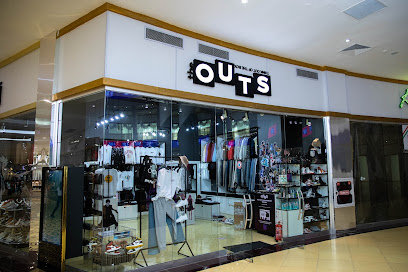
3 DOGAN MATALAR
Explore unique clothing styles at 3 DOGAN MATALAR, the ultimate fashion destination in Ashgabat, Turkmenistan.

TUDORS Kingdom of Shirts
Explore TUDORS Kingdom of Shirts, Ashgabat's premier clothing store, offering stylish apparel and exceptional service in a vibrant shopping atmosphere.

Brango
Discover Brango, the premier destination for stylish men's clothing in Ashgabat, offering a blend of fashion and local culture.
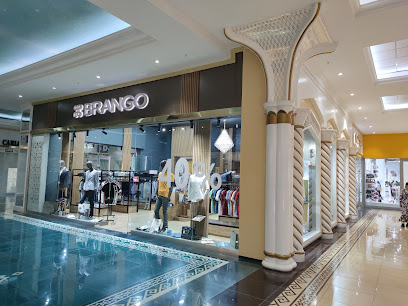
Golden_fish
Explore Golden Fish in Ashgabat for exquisite souvenirs and a touch of Turkmen culture, perfect for memories and gifts.
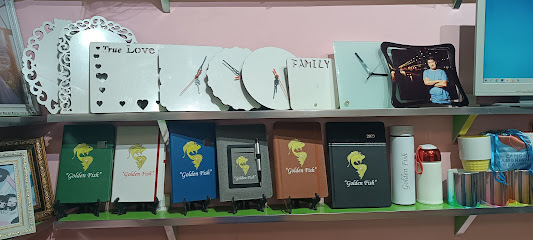
BABA MEN'S WEAR
Discover the vibrant world of Turkmen fashion at Baba Men's Wear in Ashgabat, where tradition meets modern elegance in men's clothing.
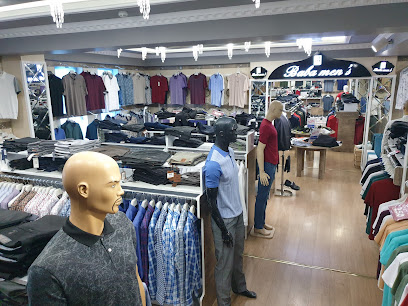
Zenan/shopping
Explore Zenan Shopping in Ashgabat for a unique collection of women's clothing that reflects Turkmen culture and contemporary fashion trends.
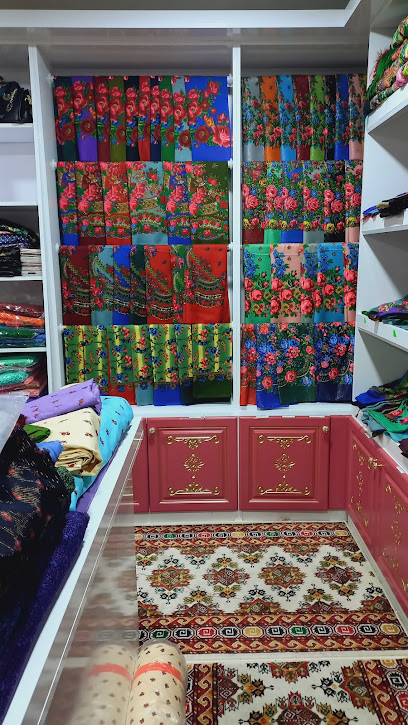
Jei’s art-design
Explore the vibrant world of Turkmen craftsmanship at Jei's Art-Design, your destination for unique gifts and cultural treasures in Ashgabat.

ahmet
Explore Ahmet in Ashgabat for a unique shopping adventure filled with local crafts, textiles, and authentic Turkmen souvenirs.

Pasabahce Resmi Distribyutor
Discover exquisite glassware and home decor at Pasabahce Resmi Distribyutor in Ashgabat, the ultimate shopping destination for unique Turkmen artistry.

M Crystal Luxury Boutique
Discover luxury shopping at M Crystal Luxury Boutique in Ashgabat, featuring exclusive items and an elegant ambiance for the discerning traveler.
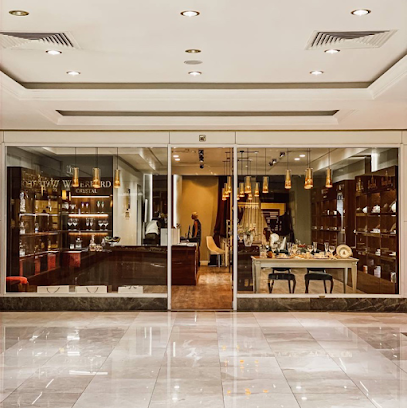
SEYLA KIDS
Explore Seyla Kids in Ashgabat for a magical shopping experience filled with toys, games, and educational delights for children.

kerim
Discover unique local products and immerse yourself in Turkmen culture at Kerim, a charming store in Ashgabat's Bagtyyarlyk district.

Essential bars & hidden hideouts
Berk Garden Pub
Discover the charm of Berk Garden Pub in Ashgabat, where delightful beers and delicious meals await in a vibrant outdoor setting.
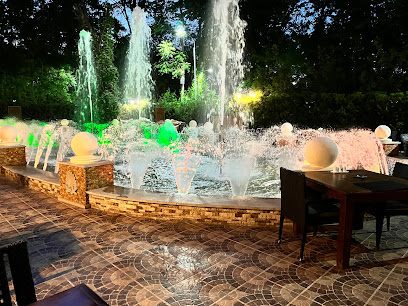
British Pub
Immerse yourself in a piece of Britain in Ashgabat at the British Pub, offering authentic dishes and a warm, inviting atmosphere.
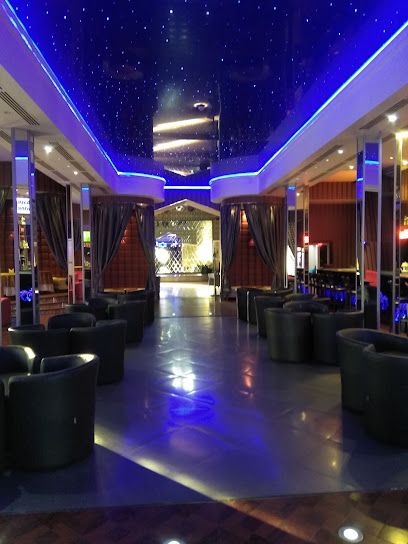
CentralPark
Experience the flavors and fun of Ashgabat at Central Park, a vibrant restaurant and karaoke bar perfect for unforgettable nights out.
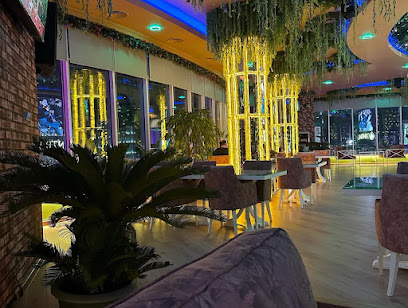
Saray Pub
Discover the lively atmosphere of Saray Pub in Ashgabat, where local culture meets vibrant nightlife and a diverse drink selection.
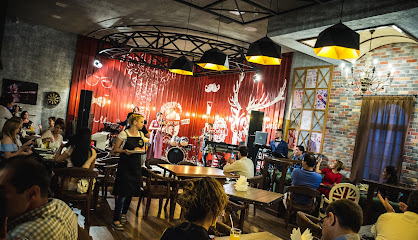
Mukam Club
Dive into the vibrant nightlife of Mukam Club in Ashgabat, where music, dance, and great company create unforgettable memories.
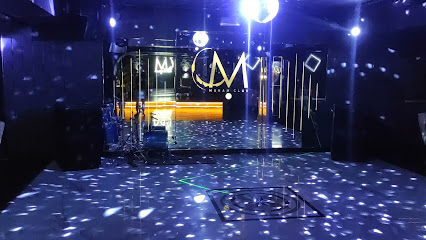
Iceberg Bar
Experience the vibrant atmosphere at Iceberg Bar in Ashgabat, a perfect haven for beer lovers and social gatherings.
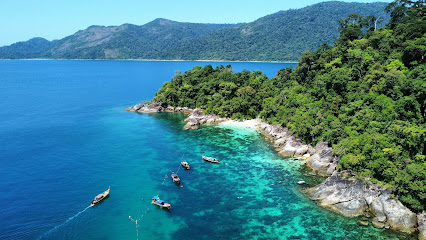
Diamond Pub
Experience the lively atmosphere of Diamond Pub in Ashgabat, a perfect blend of local culture and international flavors.
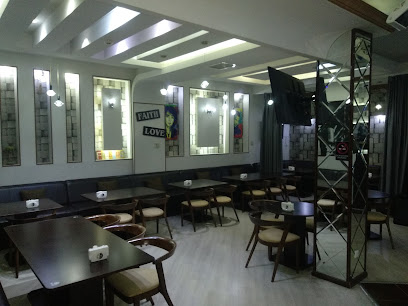
Royal Bar
Unwind in Ashgabat's Royal Bar, your go-to destination for sports, drinks, and delicious bites in a lively atmosphere.
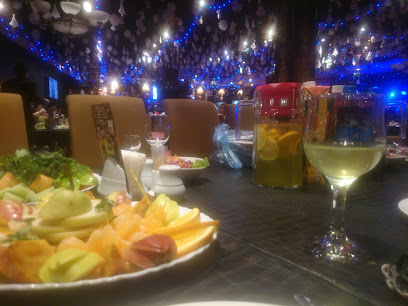
Beef restaurant
Experience the finest beef dishes in Ashgabat, where culinary tradition meets modern dining in Turkmenistan's capital.

Gulshen
Experience the vibrant nightlife of Ashgabat at Gulshen, a karaoke bar where music brings people together in a lively atmosphere.
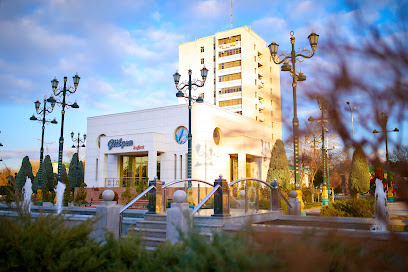
Zip Ayna restoran letni
Discover the vibrant nightlife of Ashgabat at Zip Ayna Restoran Letni, where local flavors and social atmosphere come together in a delightful bar experience.
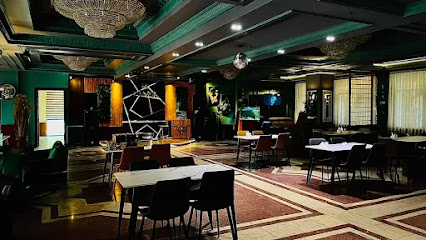
Vibe bar
Explore the vibrant nightlife of Ashgabat at Vibe Bar, a perfect blend of local culture and lively atmosphere.
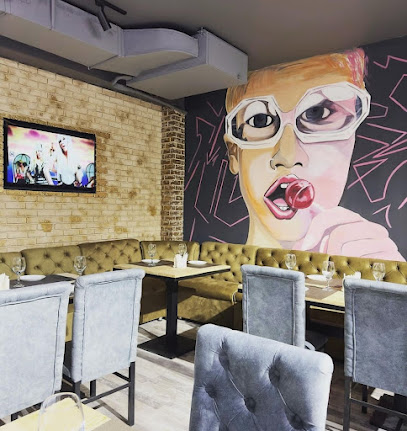
Kafe Hitrowka
Discover Kafe Hitrowka in Ashgabat: a vibrant bar offering a unique blend of local flavors and international drinks in a cozy atmosphere.

GRayewlan masgalasy
Unwind at GRayewlan Masgalasy, a vibrant bar in Ashgabat offering local flavors, lively ambiance, and a taste of Turkmen hospitality.
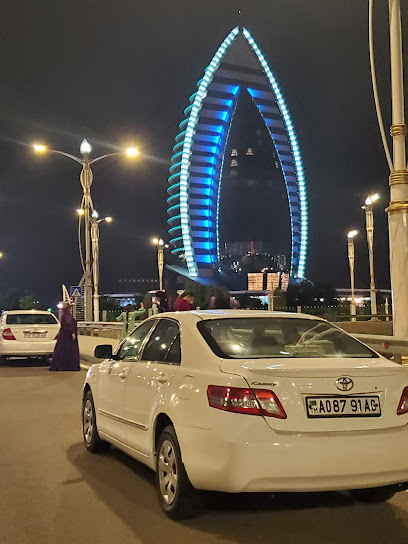
Panda Bar
Experience the vibrant atmosphere of Panda Bar in Ashgabat, where local culture meets delightful drinks in an inviting setting.

Local Phrases
-
- HelloSalam
[sah-lahm] - GoodbyeHojalyk bolsun
[hoh-jah-look bohl-soon] - YesHawa
[hah-wah] - NoÝok
[yohk] - Please/You're welcomeRahmet
[rah-met] - Thank youSag bol
[sahg bohl] - Excuse me/SorryUzr
[ooz-ur] - How are you?Naýly durmysy?
[nahy-ly doormy-sy] - Fine. And you?Ýagşy. Siz?
[yahg-shy. siz?] - Do you speak English?Siz iňlisçe gepleýärsiňizmi?
[siz een-lees-cheh gep-leh-yar-sin-iz-mi?] - I don't understandMeniň janymy?
[meh-neen jahn-y-mi?]
- HelloSalam
-
- I'd like to see the menu, pleaseMenüni görüp biljekmi?
[meh-noo-nee go-roop beel-jek-mi?] - I don't eat meatMen et yýarmam
[men et yuh-ar-mam] - Cheers!Sakala
[sah-kah-lah] - I would like to pay, pleaseTöleg etmekçi boljakmy?
[tuh-lehg eht-mek-chee bohl-jahk-mi?]
- I'd like to see the menu, pleaseMenüni görüp biljekmi?
-
- Help!Ýardam edin!
[yahrdahm eh-deen!] - Go away!Uzaklaş!
[oo-zahk-lahsh!] - Call the Police!Polisi çağyr!
[poh-lee-see chah-ghyr!] - Call a doctor!Doktory çağyr!
[dohk-toh-ree chah-ghyr!] - I'm lostMen niriň
[men nee-reen] - I'm illMen çähildim
[men chah-hil-deem]
- Help!Ýardam edin!
-
- I'd like to buy...Satyn aljakmy...
[saht-een ahl-jahk-mi...] - I'm just lookingMen yzyna seretmek
[men uz-ee-na seh-ret-mek] - How much is it?Bu näçe boldy?
[boo nah-cheh bohl-dy?] - That's too expensiveOl gyssagyna köp
[ohl gus-sah-guh-na kuhp] - Can you lower the price?Bahasy ýokarltmaly?
[bah-hah-sy yoh-karlt-mah-ly?]
- I'd like to buy...Satyn aljakmy...
-
- What time is it?Sagady näme?
[sah-gah-dy nah-me?] - It's one o'clockOnuň biri
[oh-noon bee-ree] - Half past (10)Onun ýarymy
[oh-noon yah-ruh-muh] - MorningErtir
[ehr-teer] - AfternoonGünortasy
[goon-or-tah-suh] - EveningÝagşy
[yahg-shy] - YesterdayDüýn
[doo-een] - TodayBugün
[boo-goon] - TomorrowErtir
[ehr-teer] - 1Bir
[beer] - 2Iki
[ee-kee] - 3Üç
[ootch] - 4Dört
[dohrt] - 5Bäş
[bahsh] - 6Alti
[ahl-tee] - 7Ýedi
[yah-dee] - 8Sekiz
[seh-keez] - 9Dokuz
[doh-kooz] - 10On
[ohn]
- What time is it?Sagady näme?
-
- Where's a/the...?...nira?
[nee-rah?] - What's the address?Salgyt näme?
[sahl-guht nah-me?] - Can you show me (on the map)?Meniň görmekçi boljakmy (karta üsti)?
[meh-neen guhr-mehk-chee bohl-jahk-mi (kar-ta oos-tee)?] - When's the next (bus)?(Awto) näme wagtda geçer?
[(ow-toh) nah-me wahg-dah geh-jer?] - A ticket (to ....)Bir bileti (....-a)
[beer bee-leh-tee (....-ah)]
- Where's a/the...?...nira?
History of Ashgabat
-
Ashgabat, the capital city of Turkmenistan, was officially founded in 1881. Originally a small village, it rapidly expanded with the construction of the Trans-Caspian Railway, which connected it to major trade routes and facilitated its growth into a bustling city.
-
From its founding until the early 20th century, Ashgabat was under the control of the Russian Empire. The city saw significant urban development during this period, including the establishment of European-style buildings, schools, and administrative centers.
-
On October 6, 1948, Ashgabat was struck by a devastating earthquake that measured 7.3 on the Richter scale. The disaster resulted in the near-total destruction of the city and the loss of an estimated 110,000 lives, approximately two-thirds of the population at that time.
-
Under Soviet rule, Ashgabat was rebuilt in a more modern style. The Soviet government invested heavily in infrastructure, including new residential areas, government buildings, and cultural institutions such as theaters and museums. The city also became a center for education and science.
-
Following the dissolution of the Soviet Union, Turkmenistan declared independence on October 27, 1991. Ashgabat, as the capital, underwent significant changes under President Saparmurat Niyazov, who initiated ambitious urban development projects. This included the construction of grandiose public buildings, monuments, and the extensive use of white marble in the city's architecture.
-
Ashgabat is not only the political capital of Turkmenistan but also a cultural hub. The city hosts numerous festivals, exhibitions, and cultural events that celebrate Turkmen heritage. Landmarks such as the Turkmen Carpet Museum, the National Museum of History, and the Independence Monument highlight the rich cultural tapestry of the region.
-
One of the most striking features of Ashgabat is its unique architecture. The city holds the Guinness World Record for the highest density of white marble buildings. Notable structures include the Neutrality Monument, the Alem Cultural and Entertainment Center, and the majestic Turkmenistan Tower, which offer glimpses into the country's modern aspirations and historical grandeur.
-
Today, Ashgabat stands as a symbol of Turkmenistan's rapid development and modernization efforts. The city continues to grow and attract visitors with its blend of historical sites and contemporary innovations, making it a fascinating destination for those interested in the evolving story of Turkmenistan.
Ashgabat Essentials
-
Ashgabat is served by the Ashgabat International Airport (ASB), which is located about 10 kilometers northwest of the city center. Direct flights are available from several major cities in Europe, the Middle East, and Asia. Upon arrival, you can take a taxi or arrange for a hotel shuttle to reach your accommodation. There are also limited bus services, but taxis are generally the most convenient option.
-
In Ashgabat, taxis are the most commonly used form of transportation for tourists. They are relatively inexpensive and can be hailed on the street or booked through your hotel. There is also a well-developed bus network that covers most parts of the city. For those looking to explore at their own pace, car rentals are available, but be aware of local driving customs and road conditions. Biking is not common due to the city's layout and traffic.
-
The official currency in Turkmenistan is the Turkmenistan Manat (TMT). Major hotels, restaurants, and shops in Ashgabat accept credit cards, but smaller establishments and markets often require cash. ATMs are available throughout the city, though it is advisable to carry enough cash for smaller transactions. Currency exchange services are available at the airport, banks, and some hotels.
-
Ashgabat is generally considered a safe city for tourists. However, it is always wise to take standard precautions such as avoiding poorly lit areas at night and keeping an eye on your belongings in crowded places. There are no specific high-crime areas targeting tourists, but it is best to stay vigilant and aware of your surroundings.
-
In case of emergency, dial 03 for medical emergencies and 02 for police assistance. The main hospitals in Ashgabat are equipped to handle medical emergencies, and many staff members speak English. It is highly recommended to have travel insurance that covers medical emergencies. For minor health issues, pharmacies are widely available and well-stocked.
-
Fashion: Do dress modestly; women should avoid wearing revealing clothing. Men should avoid wearing shorts in public. Religion: Do respect local customs and traditions; remove your shoes when entering mosques. Public Transport: Do be respectful and give up your seat to elderly passengers. Don't eat or drink on public transport. Greetings: Do greet people with a handshake; a slight bow of the head is also a sign of respect. Eating & Drinking: Do try local delicacies and accept food offerings graciously. Don't refuse hospitality, as it is considered impolite.
-
To experience Ashgabat like a local, visit the Tolkuchka Bazaar where you can buy local crafts and fresh produce. Engage with locals, as they are often friendly and willing to share stories about their culture. Don't miss the opportunity to visit the impressive Independence Monument and the National Museum of Turkmenistan. For a unique experience, take a walk in the evening to see the city’s buildings and monuments beautifully illuminated.
Trending Landmark in Ashgabat
Nearby Cities to Ashgabat
-
Things To Do in Mary
-
Things To Do in Bayramaly
-
Things To Do in Khiva
-
Things To Do in Urgench
-
Things To Do in Herat
-
Things To Do in Bukhara
-
Things To Do in Navoi
-
Things To Do in Qarshi
-
Things To Do in Shakhrisabz
-
Things To Do in Samarkand
-
Things To Do in Baku
-
Things To Do in Mazar-i-Sharif
-
Things To Do in Sumqayit
-
Things To Do in Panjakent
-
Things To Do in Ali Bayramli





